Patrick Dagg is a breath of fresh air in the Melbourne art scene – if that air was tinged with the smell of spray paint.
His graffiti-inspired work, now on display at the James Makin Gallery in Collingwood, features robust collages done in a tagging style with humorous, subversive sculpture. Combining politics and culture, he makes statements about the downmarket that we all see, but don’t talk about.
Dagg displays socially construed ‘lowbrow’ items, such as dildos and bongs, in ornate circumstances to shift the typically culturally elite space of a gallery into something accessible for everyone.
This article and more are available in print in Happy Mag Issue 7. Grab your copy here.

Bronze bongs and big swinging dicks: artist Patrick Dagg runs us through his humorous exhibition at James Makin Gallery.
HAPPY: Were you always drawn to subversive art, or was this a sudden shift in your approach? When did you realise that this is the art that you wanted to make?
PATRICK: To be honest I never really thought of it that way. The first works that really moved me were the large Abstract Expressionist pictures of painters like Willem de Kooning, Clifford Still and Helen Frankenthaler, and later Cy Twombly. I really got excited when I walked into a museum and gazed upon the vast, expressive gestures of those works, so much so that I attempted to replicate them in my early work. It wasn’t until I studied my Masters at VCA that these ideas and works were pulled apart and questioned and I realised that whilst those works were subversive and alive, it was during their time and place; post-WWII America grappling with creating their own utopian movement separate from European tradition.
And so I started looking at what I wanted to say, and at that time I was working in an auction house in a very wealthy suburb, studying at VCA and having no money. Politics entered my work for the first time and I realised I wanted to look at notions of value, and how as a society we are all caught in this individualist, capitalist race to the top, and that I was in a rare position to be able to comment on some of my experiences and posit an opinion. I found that humour was a great way to draw people in, and once you capture an audience you have a chance at getting your ideas out there.
That said, looking at contemporary art I am definitely interested in work that pushes the boundaries and is inventive in both subject matter and presentation. One of my favourite artists is David Hammons, an African-American artist who makes work that references his culture and experiences through deliberate material choices. Hammons has made sculptures from re-purposed Thunderbird ‘ghetto wine’ bottles, from hair collected from his local barbershops, and paintings made from found tarpaulins and Kool-Aid drink. I guess the thing that attracts me is the social element; that there is a direct relationship between the material and the intention of the work and how different people read it.
There are enough paintings and sculptures in the world that look nice, I want to make work that asks questions. Loudly.
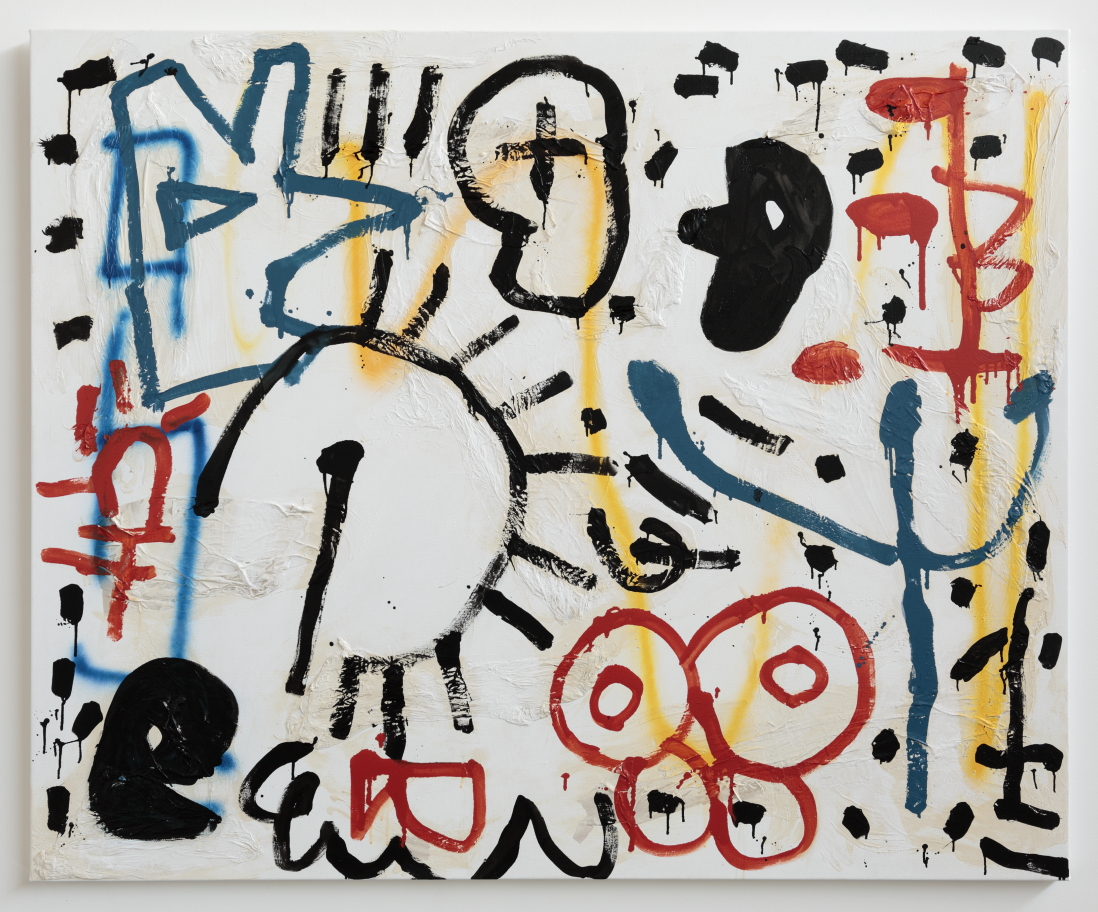
HAPPY: Can you elaborate more on the idea of the ‘downmarket,’ and how you choose items such as bongs to transcend street culture into a gallery space?
PATRICK: I guess my motivation to work with objects such as bongs, dildos and graffiti play into my exploration of hierarchies, and how as a society we assign value to certain people, places and things. I find the collective approach to something like graffiti as very superficial; that it is vandalism plain and simple instead of perhaps a signifier often of disadvantage and isolation.
I currently work in Broadmeadows, a lower socio-economic suburb of northwest Melbourne, working with disadvantaged youth at risk of homelessness. Many of my students smoke bongs as a stress relief and so seeing plastic bongs all around the TAFE I started thinking of how I could elevate this object, discarded after a few smokes and immortalise it. Taking the piss out of the monumental history of bronze as a medium, I wanted to turn the tables on where the bong is placed, and make a fine object out of something that is seen by society as dysfunctional and ugly.
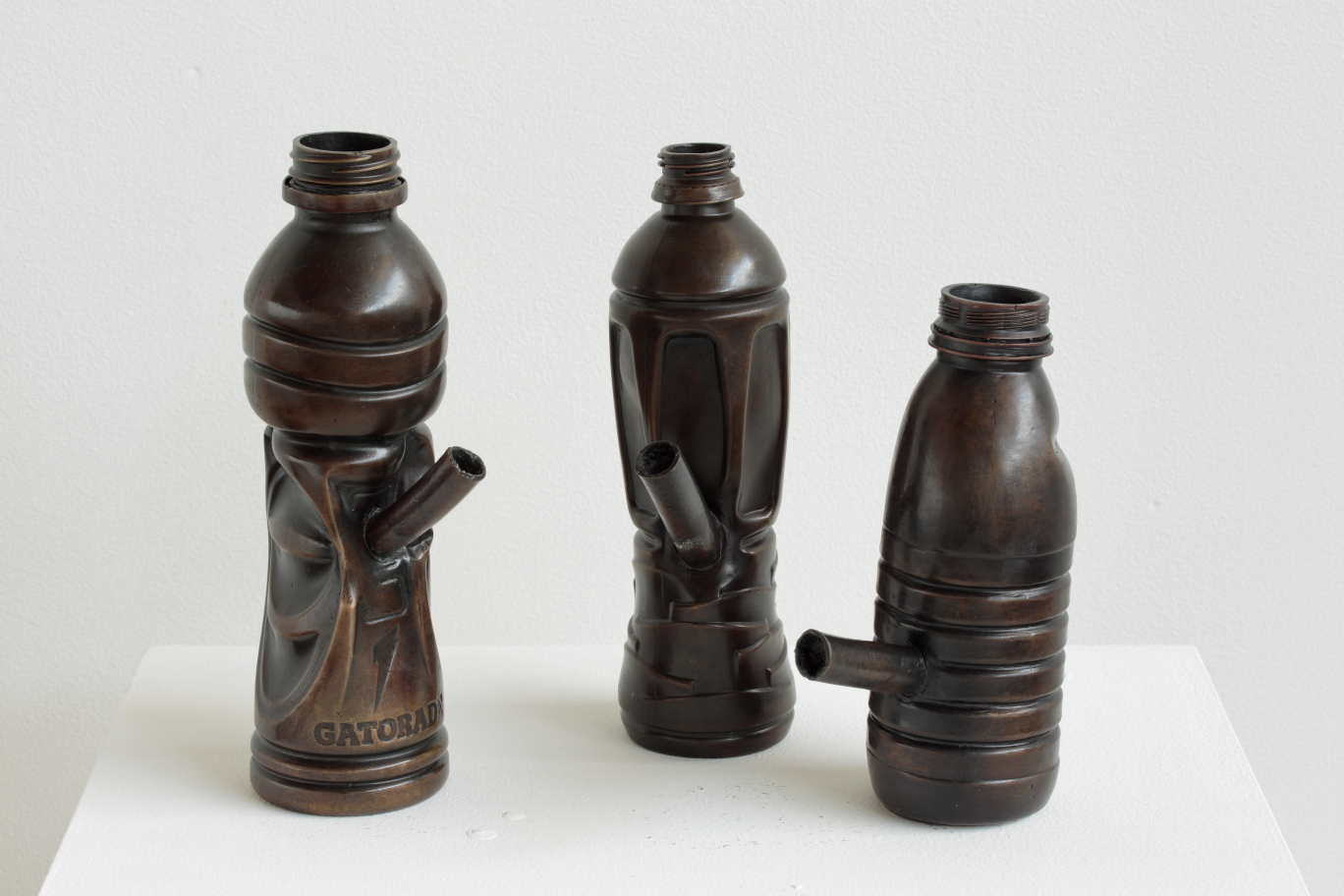
HAPPY: Where did the initial idea of representing the downmarket in a ceramic medium come from?
PATRICK: The work isn’t all about the downmarket, or less prestigious in a political sense. I am legitimately intrigued and excited by things such as scratched train windows, graffiti tags and torn advertising posters in an aesthetic way. They relate back to the excitement of gestural painting and how I see this in the everyday wear and tear of an urban environment – through these gestures people are saying things.
So I guess changing the context of these influences and merging them with unrelated interests found me making these masks. Working in the secondary art market allowed me to handle and see some amazing objects and I quickly grew fascinated with tribal art, collecting bits and pieces over the years. These accomplished objects and paintings were made from few available materials and represented cultural practice and place in such a direct way that I started to look for this in my own work.
I started a ceramics business a few years ago, Daggy Designs, painting home wares as a way of maintaining a creative practice. So I have dabbled with the material for some time. I have always loved the challenge with clay, nothing ever comes out the way you intend. Through the painting process recurring faces and figures were appearing so I felt it was a nice way to reference them in 3D. I have always been excited by the relationship between painting and sculpture and have had fun experimenting with it in ditch.
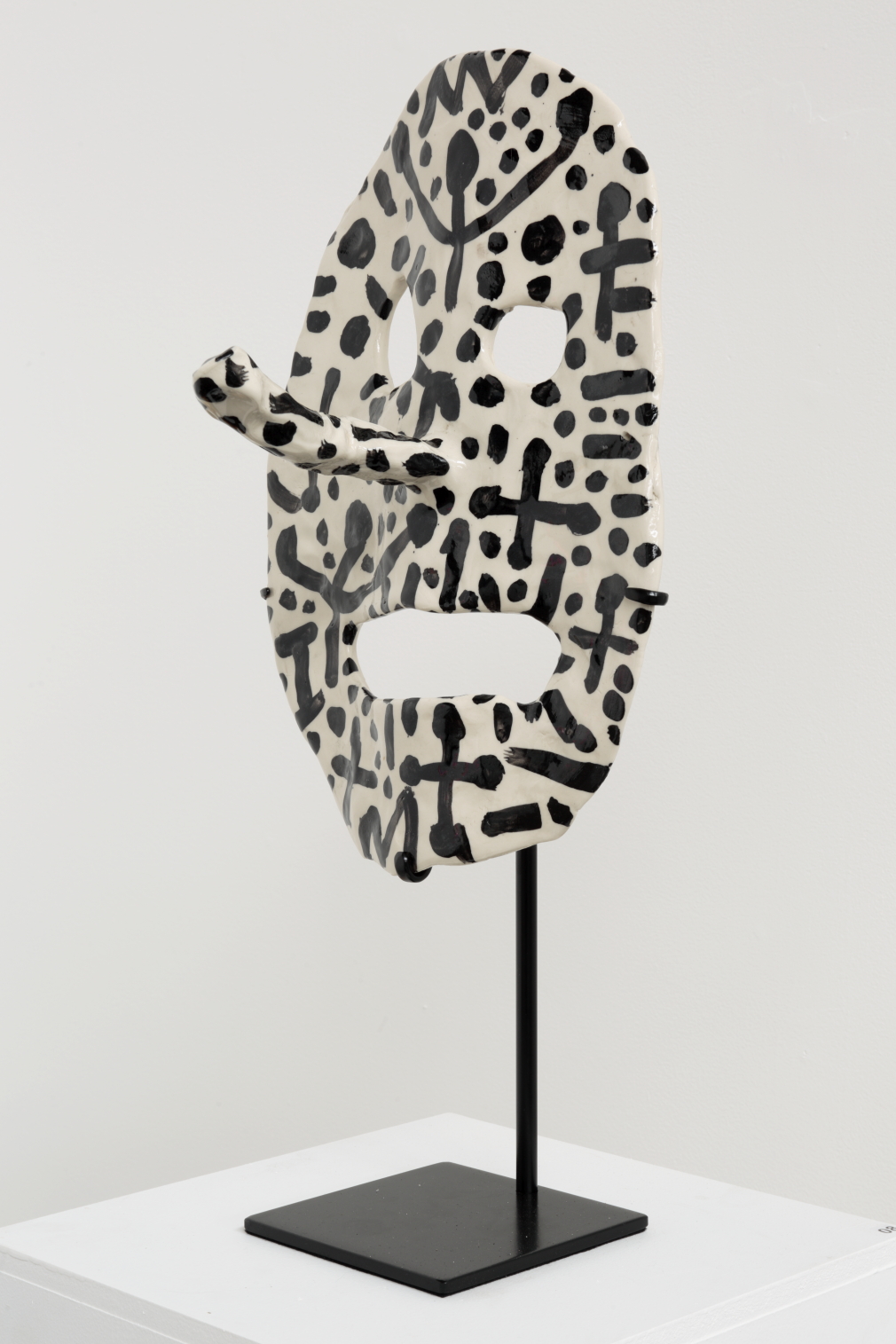
HAPPY: ditch is your first commercial show. How do you reconcile the difference between being an emerging artist, to being a career artist?
PATRICK: First commercial show for sure, which is very exciting. It’s a tough thing to keep doing, making art. I often over the years have found myself pouring all my money into work with very little opportunity or outcome. This was kind of a last effort to try and get something going and I’m very grateful for James and Camille’s support in getting this show together. I am hopeful that I am able to further develop over the years and make a career out of it… nobody goes into this madness expecting to make money.

HAPPY: Your pieces are laced with humour – a huge stack of gold dildos springs to mind. Was it difficult to inject some laughs into a culture of art that can be conservative, and do you find yourself up against some unfair stereotypes?
PATRICK: Thank you, yes Rich Dicks was fun to make. Humour is definitely a major concern as I feel that art takes itself very seriously and in doing so can isolate itself from the marketplace, appearing elitist. By working with taboo objects or changing contexts I am able to draw an audience in who may not have any interest in visual arts to a conversation about say, class. The humour is the draw card and I hope viewers can start to try and unpack some of the more serious considerations at play.
Was it difficult to inject laughs? Not really, I mean, say the whole phallic vibe in the show; it’s a deliberate fuck you to social classism, to authority; social and art based, and perhaps just a frustration of the zeitgeist. A fresh slice of existential angst. And so behind these frustrations there is humour – I find the two linked very vividly. Like if you stub your toe and start swearing madly and then burst into laughter.
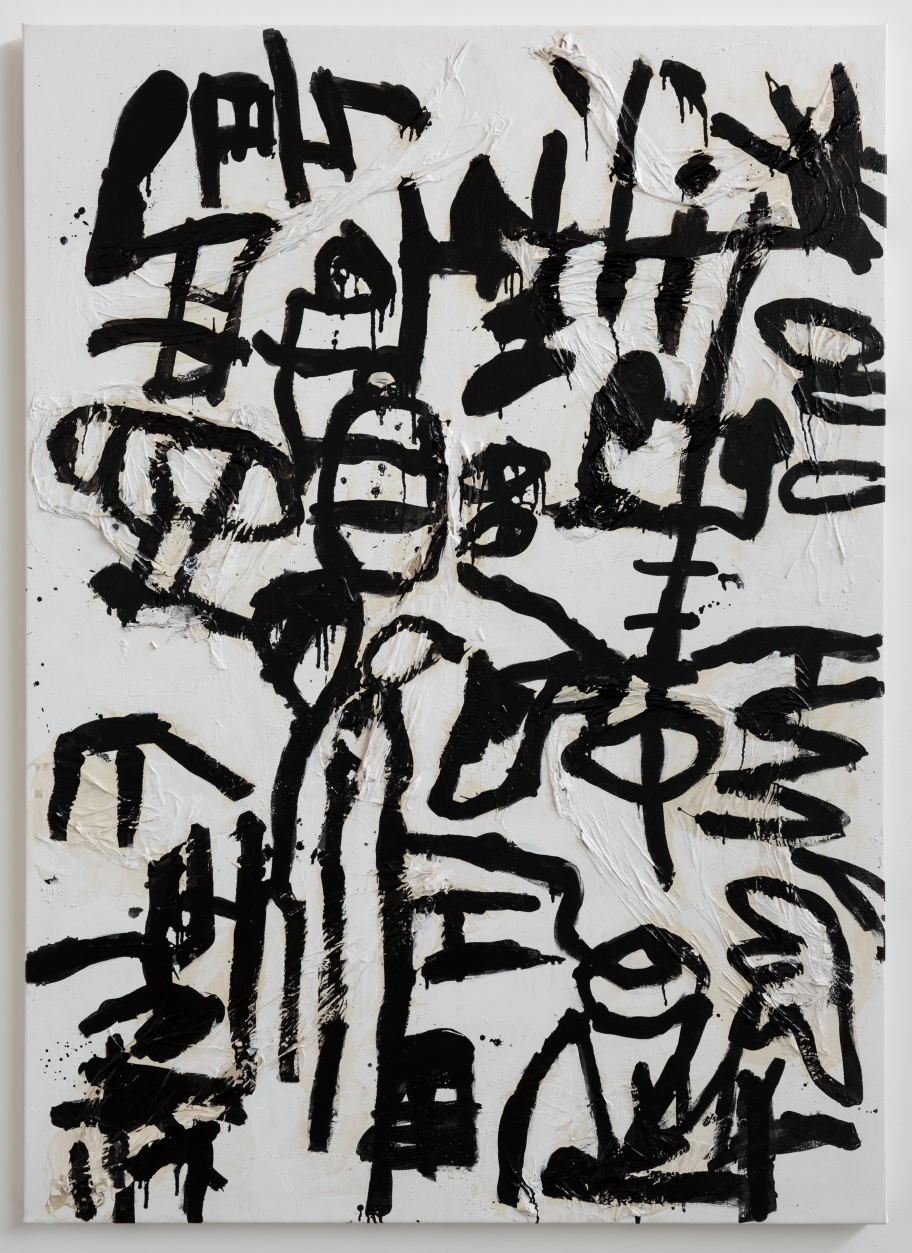
HAPPY: The titles of some of your artworks are elaborate and elegant, is this a deliberate departure from some of the more explicit, overt themes of the work?
PATRICK: Some of the titles are self-referential, like Big Swinging Dick and Beugs, and some are more poetic. I pick up material from all over the place; films, music, and literature, quotes of things that capture the feel of what I am trying to articulate. The title Clear A Path, I’m Going Home is from the film Falling Down with Michael Douglas about a working stiff who has a break down from the daily grind of traffic jams, office job boredom and urban decay that sends him fairly militant, walking away from his car in a traffic jam trying to get home by foot armed with a shotgun. After two gang kids attempt to steal his briefcase at knifepoint he loses it and scares them away with a bat, yelling “Clear a path motherfuckers, I’m going home”. Not so militant myself, I love this film in its representation of modern capitalist society and how there are so many man-made obstacles in attaining happiness.
Interestingly enough this was an important transitional work as it took me from purely abstract to semi-figurative and changed my approach to how I plan works. I wanted to find a system within which to improvise, rather than improvising the entire work. I found collage to be central to my practice, not just in the use of paper, porcelain and a range of materials that were stuck down but also in a conceptual way; a way whereby an idea is built upon, edited, reworked and its context is changed to produce a new whole. I decided that in order to best articulate my painting ideas, a model or study would need to be produced.
Thus I began printing source material, mostly made up of an extensive range of photographs of graffiti I had taken over the years, as well as artworks and images I liked. These would be cut and pasted, drawn on, scanned, printed and reworked until the composition was correct. I would then use this as a guide with which to make the paintings, often changing large portions of them as I went. I feel this allowed me to depend less on luck when improvising and made for a far stronger composition. Through this process I found the masks/faces/Pinocchio images appear and then further developed these idea into the ceramics masks.

HAPPY: I am drawn to the ceramics, but also to the captivating neon of Big Swinging Dick. Where did the inspiration come to move away from the mediums of sculpture and paintings, toward a light display?
PATRICK: Thank you, yes, I am very proud of that work. The neon’s started at VCA when I wanted to make a work about graffiti, in particular why men feel the need to draw dicks in bathroom stalls. I did a few paintings of them but they never really elevated the crude dicks to a level that changed their context. Neon was a great material that allowed the dicks to really shine, pun intended, and was materially a consideration with the history of neon signage and its reasonably recent use in contemporary art. The way artists like Bruce Nauman were able to tackle really big subjects such as sexuality and death in such an engaging and light way. Despite someone’s interest in art they will be drawn to neon, like a TV in a bar.
Obviously it befitted the concept too, a big swinging dick is a big shot so I wanted to play with that saying in a humorous way.
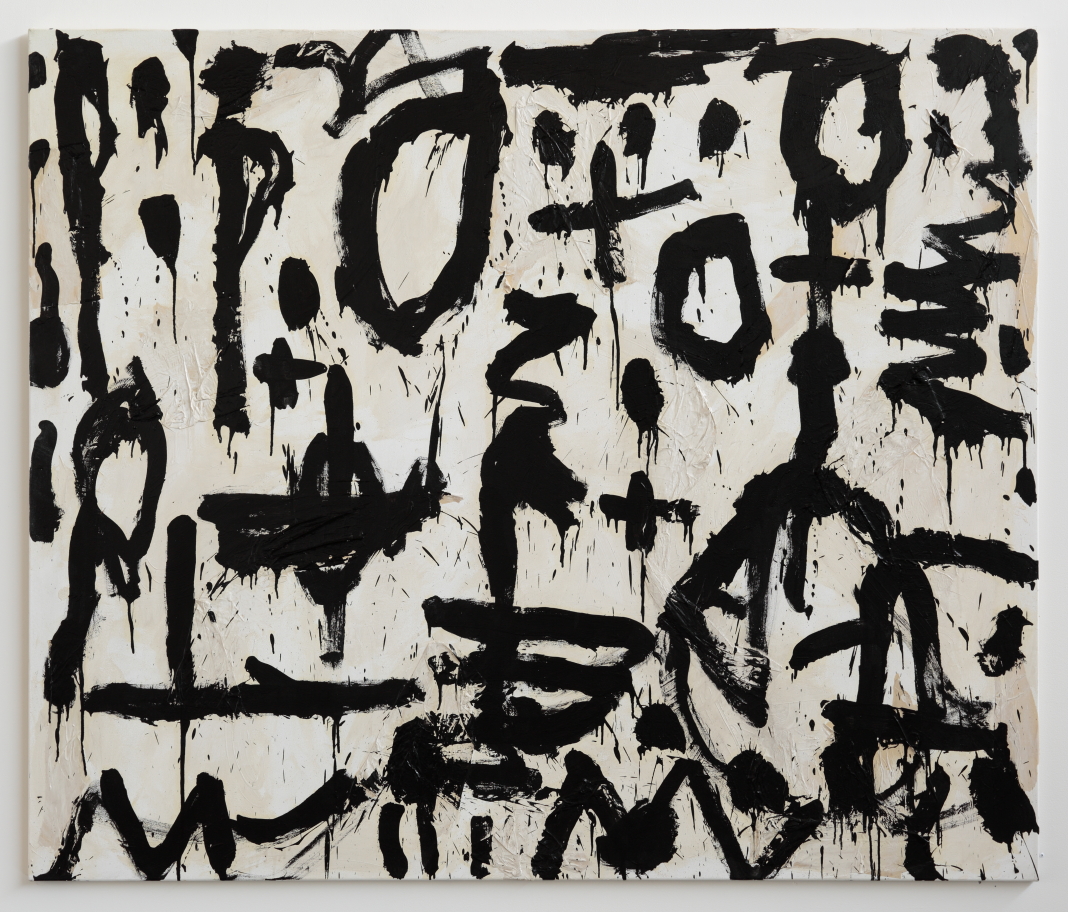
HAPPY: Banksy is a great international example, and even at home we have Lushsux. What has been your personal experience with the tagging culture in the graffiti world?
PATRICK: I love tagging culture, however I have a weird distinction between my love of ‘bad’ tags and street art. I know Banksy isn’t necessarily sanctioned, but I find the popularity and notoriety of his work uninteresting. I am attracted to the aesthetics and spirit of throw up tags and bombing, building up repeated scrawls of a surface or place.
As I mentioned before, the mentality is different. For someone to go out each night and put up their name in order to build notoriety they risk injury, criminal charges or worse. And they do it for free. They may be pests to construction sites or public transport providers but they are obviously desperate enough to take these risks in order to be heard, and I think this desperation is a social issue that goes far deeper than a few painted trains. Not knocking street art at all, it’s just a different intention. It’s the distinction between being mainstream culture or being sub-culture.

HAPPY: In terms of your paintings, you have several graffiti-style collages on canvas in your exhibition at Makin Gallery. Why not on walls?
PATRICK: So all the works are on canvas, apart from an older work on board. I do like the nature of painting on gallery walls and would like to do some more murals and installations, however I guess the nature of the gallery being commercial and not an institution is that we need to sell works to both exist. Definitely in the future I would like to exhibit work on gallery walls that have been altered, either tagged or smashed up a bit. I think showing outside of the ‘white cube’ is a good move.
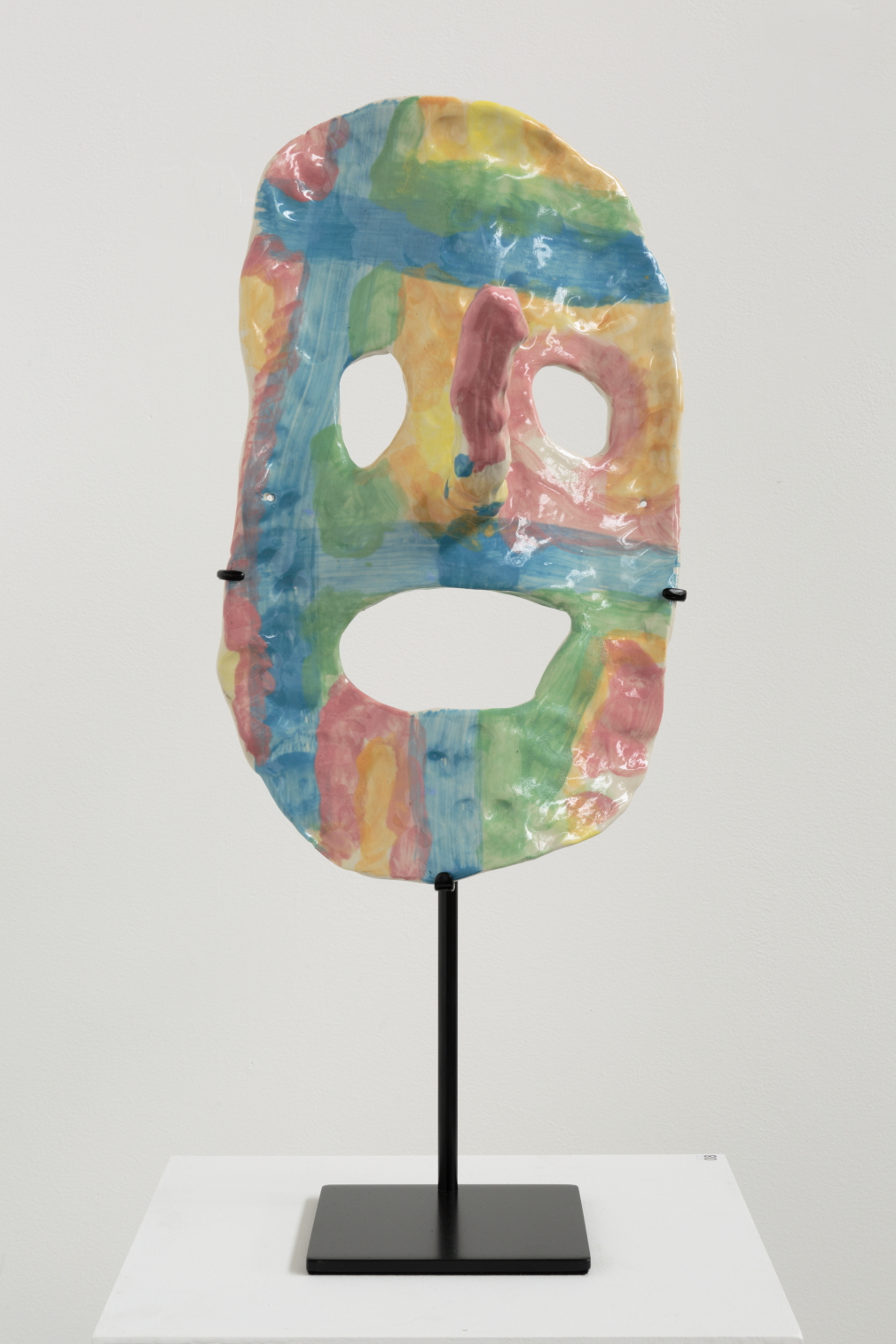
HAPPY: Do you find that more people can identify with this idea of the downmarket? Is it more accessible than elitist approaches that people can sometimes have toward art?
PATRICK: Not necessarily, to be honest most people I speak to don’t really ‘get’ art or have no interest in it. I think making work that is fun or challenging certainly gives me an opportunity to draw a wider pool in. I think the main concern is that Australia is such a small art market and the work that most people are comfortable with is still portrait or landscape painting. It blows my mind that people are still hung up on the Archibald. That said, there are some great contemporary art prizes like the John Fries that are building interest in more diverse art practices.
I don’t want to dumb down my work by any means, I think mainstream culture is doing that enough, but I am conscious that some contemporary art is too esoteric and doesn’t give viewers many entry points to read the work unless they went to art school. I am trying to make work that everyone can get something out of.

This article and more are available in print in Happy Mag Issue 7. Grab your copy here.



